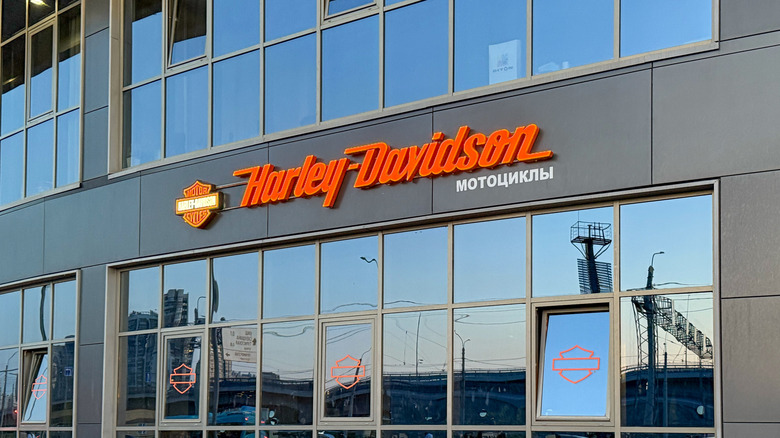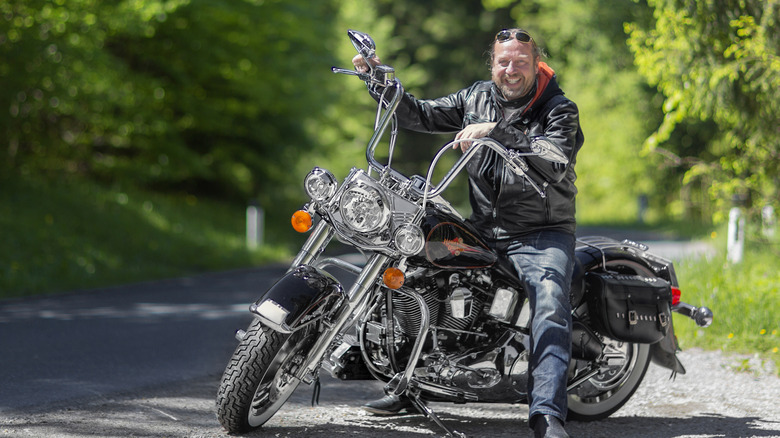Here's Why So Many Harley-Davidson Dealerships Are Closing
The recent wave of Harley-Davidson dealership closures has left many riders wondering what's really happening behind the scenes. From long-standing stores in San Francisco and New York City to smaller regional shops across Colorado, Wisconsin, and Florida, the trend is clear: many Harley dealers are shutting their doors. The main reason comes down to one simple truth: according to dealers themselves, they're not making money anymore.
For decades, Harley dealerships thrived. During the boom years, selling Harleys was seen as almost guaranteed profit. That changed dramatically in the years following the COVID-19 pandemic. While 2020 and 2021 brought record sales as people turned to recreational purchases, that momentum collapsed once interest rates jumped and consumer spending slowed. Dealers were suddenly stuck with too much inventory, and the financing costs to hold those unsold bikes skyrocketed. Some dealers reported paying $25,000 to $40,000 per month just in interest on stock sitting in showrooms.
Dealers who had invested millions into massive "Taj Mahal" style showrooms found themselves overwhelmed by operating costs as revenue dropped. Add to that Harley-Davidson's own online sales strategy, which often undercut dealer prices on clothing and accessories (some of which are absolutely essential for every Harley-Davidson rider), and many shops were left with declining foot traffic and shrinking profit margins. Simply put, too many dealerships are chasing too few sales. With U.S. Harley sales cut by more than half since their peak in 2006, the closures aren't surprising.
The role of corporate demands and e-commerce
Dealers point to Harley-Davidson's corporate policies as a major factor accelerating closures. One of the most common complaints involves the company's push for costly showroom upgrades. Some dealers were presented with requirements running into millions of dollars, from tearing out floors and adding new expansions to redesigning entire service areas. For smaller or family-owned dealerships, the expenses were impossible to justify when profits were already slim. Even with negotiated reductions, many still faced hundreds of thousands in renovation costs.
Inventory management has been another sore spot. Dealers say Harley sent them more bikes than they could realistically sell, forcing them to either take on excess stock or risk losing their franchise agreements. When interest rates climbed, the cost of financing that inventory (called a floor plan) became crushing. This left dealers paying huge monthly sums for motorcycles that often sat unsold for months.
Meanwhile, Harley-Davidson's direct-to-consumer e-commerce efforts have eaten into a key revenue stream for dealerships. Items like jackets, helmets, and branded gear were once reliable add-ons when customers came into stores. Now, with Harley offering discounts of 40–60% online, buyers have little reason to visit dealerships for those purchases. That shift has not only cut into profits but also reduced the showroom traffic that often led to motorcycle sales. Combined, these corporate pressures and online competition have made the dealer business model less sustainable than in the past, especially with Harley themselves being in financial trouble.
A changing market for Harley-Davidson
Beyond internal issues, broader market forces are also shaping the wave of dealership closures. Motorcycle demographics have shifted significantly in recent decades. Harley's core buyers (older, wealthier riders) are aging out of the market, and younger generations have been slower to adopt the brand. Attempts to attract new riders with models like the LiveWire EV or the Pan America adventure bike haven't delivered consistent results. While initial sales were promising, demand has dropped off, leaving dealers with slow-moving inventory.
The overall size of Harley's market has also shrunk. In 2006, the company sold over 344,000 motorcycles worldwide. By 2024, that number had dropped to just over 151,000. Fewer sales overall mean fewer bikes per dealer, and with more than 650 dealerships still operating in the U.S., the competition has become unsustainable. Dealers often find themselves fighting over the same shrinking pool of buyers, leading to price wars that further erode profits.
For many dealerships, the combination of declining demand, high costs, and corporate policies has made closure the only option. Unless Harley-Davidson, or whoever owns them these days, finds a way to better support its dealer network while adapting to a changing rider base, more closures seem likely.


